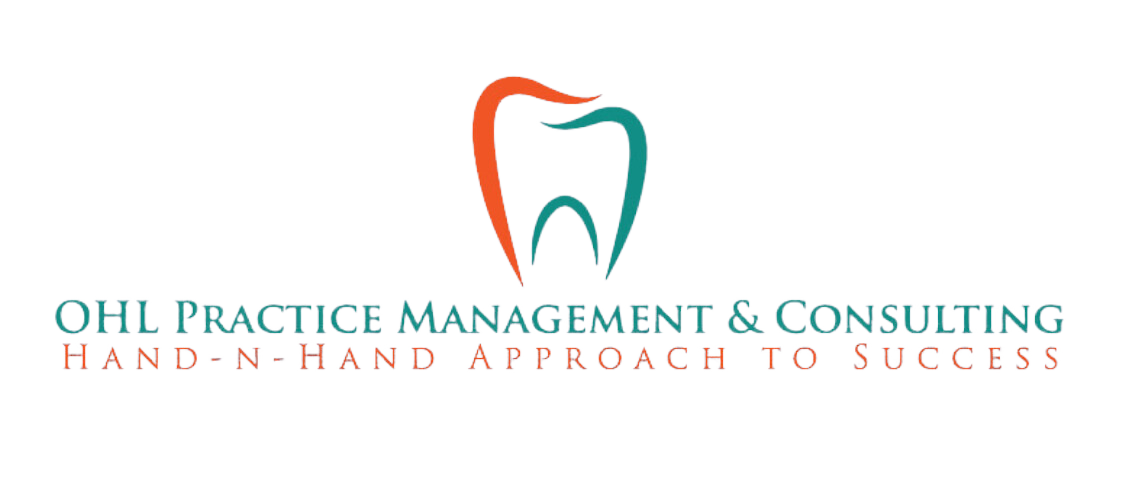The Advantages of Personalized Dental Appliances in Sleep Apnea Therapy
Custom dental sleep apnea appliances provide distinct benefits for managing obstructive sleep apnea effectively. These tailor-made devices exemplify the progression from one-size-fits-all remedies to bespoke treatments that address individual anatomical variances and patient preferences.
Firstly, custom appliances are designed for the individual’s oral structure, improving comfort and efficacy. Unlike mass-produced models, these devices are crafted after a comprehensive dental assessment, ensuring that the jaw position and pressure points align with the patient’s physiology. The snug fit minimizes discomfort and enhances the device’s ability to maintain an open airway throughout the night.
Secondly, customization allows for the accommodation of specific health needs. Patients with varying degrees of sleep apnea severity or those with unique dental concerns can receive devices shaped around their circumstances. For example, a patient with mild sleep apnea might get a less intrusive appliance than someone with severe apnea, resulting in personalized therapy and improved compliance.
Lastly, the personal touch in creating these appliances fosters patient confidence in their treatment. Knowing that a device is crafted uniquely for them can encourage consistent use and make the management of sleep apnea a more integrated part of their daily life. This confidence can lead to higher adherence rates and, consequently, better therapy outcomes.
Introduction
Custom dental sleep apnea appliances significantly improve treatment experiences by addressing the unique anatomical requirements of individuals. They mark a departure from generic devices by providing custom-fitted solutions that enhance sleep quality for those with sleep apnea.
These appliances cater to each patient’s specific oral structure, boosting comfort and the chance of a successful therapy. Tailor-made devices consider the size, shape, and overall oral anatomy, allowing for a precision fit that feels natural and unobtrusive. For instance, a device formed to the contours of a patient’s mouth can prevent excessive pressure on the gums, leading to increased comfort and a better night’s sleep.
Personalization extends to the functionality of the devices, each designed to achieve optimal airway alignment for the wearer. By using technologically advanced digital design and construction, dental professionals can create appliances that maintain the natural position of the wearer’s jaw and tongue, significantly reducing the incidence of airway blockages during sleep. Remedies are considerably more effectual than their ready-made counterparts, which can only provide a rudimentary level of symptom relief.
Moreover, the use of premium materials in custom appliances ensures durability and biocompatibility, giving patients the confidence and willingness to consistently wear their devices. These materials can withstand nightly use without degrading quickly, maintaining their structural integrity and functionality over time. This reliability contributes to the long-term success in managing sleep apnea symptoms.
Key Challenge or Risk Area 1
The central challenge lies in dispelling the myth that all oral appliances for sleep apnea are functionally equivalent. This misconception undermines the bespoke nature of treatments that address not just the symptoms but also the underlying issues causing sleep apnea.
Firstly, individual anatomical differences necessitate customized appliances. A variety of measurements and dental impressions are taken to create devices like MADs and TRDs that fit perfectly within a patient’s mouth, avoiding the discomfort and ineffectiveness often associated with one-size-fits-all alternatives. For example, an oral appliance for someone with a large overbite would differ significantly from one for a patient with no overbite at all.
Secondly, custom oral appliances tackle various levels and sources of airway obstruction. A well-fitted MAD might advance the jaw just enough to alleviate mild snoring in one patient, while for another, a more extensive adjustment may be critical to prevent severe obstructive episodes. This tailoring is crucial as it directly impacts the potential to improve airway patency during sleep.
Lastly, the customized approach delivers therapeutic advantages that generic devices cannot match. By focusing on an individual’s specific needs, the resulting oral appliance can more effectively ease the symptoms of sleep apnea, leading to more restful sleep and a better overall quality of life—benefits that ill-fitting, mass-produced devices simply cannot provide.
Key Challenge or Risk Area 2
The challenge here involves the medical community’s slow adoption rate of advanced technology for treating sleep apnea. Innovations such as 3D printing and biocompatible materials stand ready to enhance care but are not being utilized to their full potential due to resistance to change.
Firstly, the innovation of 3D printing technology in creating custom-fitted MADs allows for unprecedented precision in treatment. This method can produce devices that conform so closely to a patient’s oral anatomy that they are almost unnoticeable when worn, dramatically improving the wearer’s comfort and compliance with their treatment regimen.
Secondly, the introduction of biocompatible polymers as construction materials for sleep apnea devices marks another advance waiting to be embraced. These materials are not only durable but are also less likely to cause irritation or allergic reactions, thus broadening the suitability of oral appliances for a larger patient population.
Lastly, the use of digital intraoral scanning as part of the treatment process can dramatically raise the quality of patient care. Scans taken with this technology provide detailed 3D images of the oral cavity, eliminating guesswork and reducing the time needed to create perfectly fitting appliances. It is a significant improvement over traditional impression methods that are less accurate and more uncomfortable for patients.
Key Challenge or Risk Area 3
Addressing patient concerns about comfort and potential dental or TMJ complications is a critical challenge in sleep apnea treatment. Alleviating these concerns requires a deliberate and considerate approach that reassures patients of their well-being.
One way to confront this challenge is through detailed biomechanical evaluations. These assessments measure the precise movements and pressures in a patient’s mouth, ensuring that any appliance prescribed does not exert undue stress on teeth or jaw joints. By custom-fitting the device to the unique dynamics of the patient’s oral biomechanics, practitioners can reduce the risk of discomfort or longer-term complications.
Another essential element is to facilitate gradual acclimation to the oral appliance. This can involve starting with shorter periods of wear and slowly increasing them, allowing the patient’s mouth to become accustomed to the appliance without causing soreness or pain. Educating patients about what to expect during this period can also minimize anxiety and improve compliance.
Lastly, providing consistent and thorough follow-ups forms the cornerstone of this patient-focused strategy. Regular check-ups enable dentists to monitor the fit and effectiveness of the appliance, make any necessary adjustments, and reassure patients that their concerns are being taken seriously. This diligent aftercare not only enhances patient satisfaction but also helps cement the long-term success of sleep apnea therapy.
Actionable Response or Strategic Solution
Addressing challenges in dental sleep therapy involves implementing strategic solutions that hinge on patient education and personalized care. Emphasizing these areas ensures a clear understanding and alignment with individual patient concerns.
An essential part of the strategy includes the patient’s understanding of their condition and the treatment options available. Through education, patients can recognize the signs of improperly fitted devices and understand the importance of a well-aligned appliance. For example, clear explanations of how oral appliances work to maintain an open airway can empower patients to take an active role in their treatment.
Collaboration among healthcare professionals is another pillar of this approach. By working together, physicians and dentists can share insights and combine their expertise to devise the most comprehensive treatment plan. When these professionals use advanced diagnostic equipment, they can create appliances that are not just theoretically precise but precisely tuned for the individual’s requirements.
Lastly, the commitment to a patient-centric service completes this strategy. The practice is distinguished by recognizing the unique aspects of each case, from initial consultation through to the meticulous details of the fitting process. This dedication to tailored care establishes Ohl Practice Management & Consulting as a prime provider of dental sleep services within Houston and beyond.
Decision Criteria or Escalation Triggers
Effective dental sleep therapy is founded on critical decision-making criteria and the identification of triggers that may necessitate advanced intervention. This structured approach ensures that care is both responsive and specifically attuned to patient requirements.
Detailed sleep studies stand as the first crucial element, providing a baseline measurement of a patient’s sleep apnea severity. Data collected from these studies guides practitioners in selecting the correct type of oral appliance that can offer maximum therapeutic benefit. For instance, more severe cases might require a more aggressive form of mandibular advancement, while milder forms could be managed with minimal intervention.
The second element is the careful selection of appliance types based on study outcomes. The correct choice of device plays a significant role in the success of the treatment. This could range from a tongue-retaining device for patients who primarily need help keeping their airway clear, to more complex solutions that adjust jaw position to improve breathing.
Lastly, routine evaluations during follow-up appointments are essential. These reviews enable practitioners to assess the ongoing performance of the appliance and to make any adjustments as necessary. Such attentiveness ensures that therapy evolves in concert with any changes in the patient’s condition or lifestyle, maintaining the highest standard of care.

Support Resources or Professional Guidance
To deliver a superior level of service, providing continuous support and expert guidance is essential. Ohl Practice Management & Consulting is committed to offering resources that contribute to a proactive healthcare environment and help patients achieve the best possible outcomes in dental sleep medicine.
One aspect of this support is the availability of remote consultations. Through telehealth technology, patients can discuss their concerns and receive advice from the comfort of their home. This convenience can increase patients’ engagement with their treatment by making professional assistance readily accessible, regardless of physical location or mobility constraints.
Digital tracking of treatment progress is another vital resource. By using software that monitors the effectiveness of sleep apnea appliances, both practitioners and patients can see real-time data on how the therapy is performing. This transparency not only allows for timely adjustments to the treatment plan but also encourages patients to take an active role in managing their health.
Lastly, offering educational content is paramount to empowering patients. By providing clear, understandable information about sleep apnea, its treatments, and the use of appliances, Ohl Practice Management & Consulting ensures that patients are well-informed participants in their care journey. Educated patients are more likely to comply with treatment protocols and experience improved treatment outcomes.
Preventive Measures or Best Practices
In dental sleep medicine, the implementation of preventive measures and best practices are fundamental to protecting patient health. A proactive approach ensures that patients receive care that not only addresses their current condition but also actively works to prevent potential complications.
One best practice involves the use of evidence-based methods to select the right appliance for each patient. This means relying on scientific research and clinical trials to make informed choices about which type of oral appliance will most effectively treat a patient’s sleep apnea. It also involves considering the patient’s specific medical history, lifestyle, and preferences to ensure a tailor-made fit and optimal results.
Another preventative measure is the integration of digital technology into the fitting process. Leveraging tools like digital imaging and 3D printing ensures that appliances are not only perfectly fitted to each patient’s anatomy but are also manufactured to the highest standards of precision and quality. This attention to detail reduces the likelihood of complications and improves the overall effectiveness of the treatment.
Lastly, a commitment to innovation keeps the practice at the forefront of dental sleep medicine. Engaging with the latest research, adopting new technologies, and continuously refining treatment protocols are all part of a dedication to excellence. This commitment guarantees that patients benefit from the most advanced and effective treatments available.
Conclusion
Custom dental sleep apnea appliances have become a hallmark of success in precision medicine, serving as a powerful example of how patient-specific methodology can revolutionize healthcare outcomes.
The first point of success is the patient-centered approach of Ohl Practice Management & Consulting. By prioritizing the unique needs and experiences of each patient, the practice ensures that all treatment plans are not only medically sound but also tailored to enhance the individual’s comfort and compliance, resulting in higher success rates and patient satisfaction.
The next key factor is the integration of expert clinical insight with technological developments. By combining the nuanced understanding of dental professionals with state-of-the-art equipment and techniques, Ohl Practice Management & Consulting delivers treatments that are accurate, efficient, and of the highest quality—further illustrating the potential for improved healthcare delivery through innovation.
Finally, the practice’s foundation in both scientific dedication and compassionate service underscores its commitment to more than just medical interventions. Ohl Practice Management & Consulting seeks to elevate the standard of care, aiming to positively impact every aspect of a patient’s well-being and contribute to an overall better quality of life for those they serve.
Don’t let uncertainty hold you back. Schedule a consultation today and start building a thriving dental sleep practice with Ohl Consulting!
Ohl Practice Management & Consulting
connect@ohlpracticeconsulting.com
FAQ
What are custom dental sleep apnea appliances?
Custom dental sleep apnea appliances are individually designed devices tailored to fit your unique mouth structure, enhancing comfort and effectiveness in treating obstructive sleep apnea.
Are custom appliances more effective than generic ones?
Yes, by working closely with healthcare professionals and utilizing precise 3D printing and biocompatible materials, custom appliances offer a more comfortable and successful alternative to generic devices.
How do you ensure comfort and safety with these appliances?
We prioritize patient comfort and safety. Custom appliances are designed after thorough assessments to ensure they match your oral anatomy perfectly, reducing the risk of discomfort or TMJ complications.





